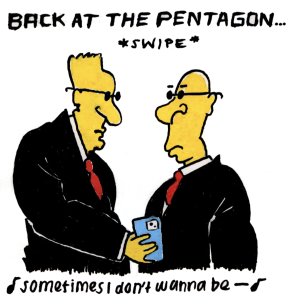
To hear the pundits tell it, we should be entering the age of wearable technology. Pebble, a smart watch that was funded through Kickstarter, currently holds the site’s record for most funded project with a total pledge of more than $10 million.
Rumors are swirling about the potential of an Apple smart watch, and Google is working on rolling out its new Google Glass hardware to a small group of hand-picked “Explorers” who are willing to pay $1,500 for the privilege of being on the cutting edge.
In short, wearable tech is big in the hype business right now.
As we begin to spin up the hype machine for the proposed iWatch, it’s important to remember what came before. Remember Microsoft’s SPOT watches? How about the Fossil FX2008? They were smart watches that were supposed to revolutionize the way we interacted with our wrists. (They are also but two examples of the growth of the smart watch idea, which has roots in the calculator watches of decades past.)
Those watches are long gone, and for good reason: They underperformed for their price. They were small, slow and bulky without providing enough functionality. As we look to the future of wearable computing, it’s important to keep these failures in the back of our minds. We’re not all wearing smart watches today because they have been a losing proposition in the past.
But since then, a lot has changed. Wearable tech doesn’t need to be capable of doing everything, because we’re carrying around these computers in our pockets that rival the capabilities of some of the best tech of the last decade. With a Bluetooth connection, a smart watch can act essentially as a second display for the processing package in a smartphone.
Fitness trackers are a great example of that symbiotic relationship at work. Nike, Jawbone and Fitbit have all created what are essentially enhanced pedometers that can interface with your smartphone, and they seem to be catching on. As a part of the ongoing hunt for an iWatch, observers noticed that Apple CEO Tim Cook tends to wear a Nike FuelBand in his daily life.
But even though wearables are able to do more with less, tech firms that want to sell them as consumer products need to be ready to pitch them as valuable consumer goods. I’m not sure that wearable tech is quite at that stage yet.
Case in point: Google Glass. While the technology behind it may be revolutionary, Google needs to actually make a case for why consumers should bother to plunk down hundreds upon hundreds of dollars on an experimental piece of tech to stick on their faces. Early adopters already picked up earlier iterations on the smart watch concept, and it seems Glass has already piqued the interest of people who are interested in technology.
While I’m living proof of the success of wearables (I can’t get enough of my Fitbit One), I’m still not certain that the world is going to take the leap to using wearable tech. While it’s certainly becoming more prevalent, only time will tell if this is just a fad directed at nerds, or a new frontier in consumer tech.








